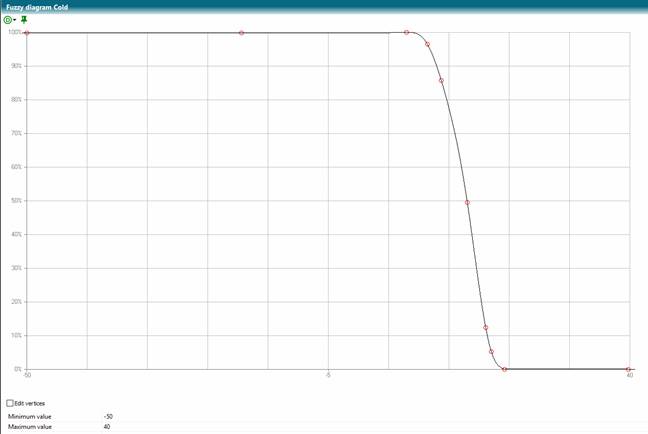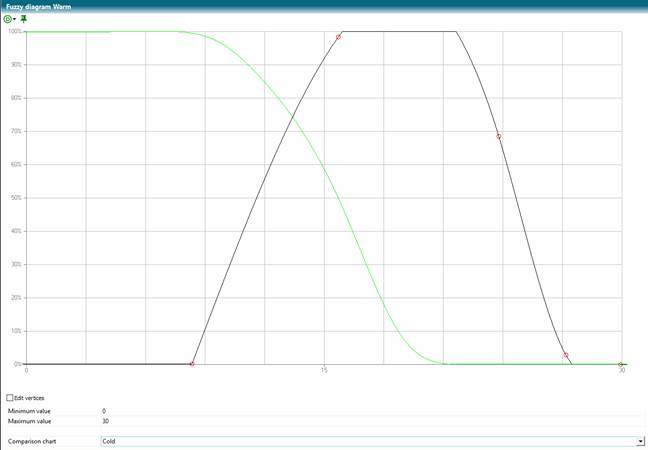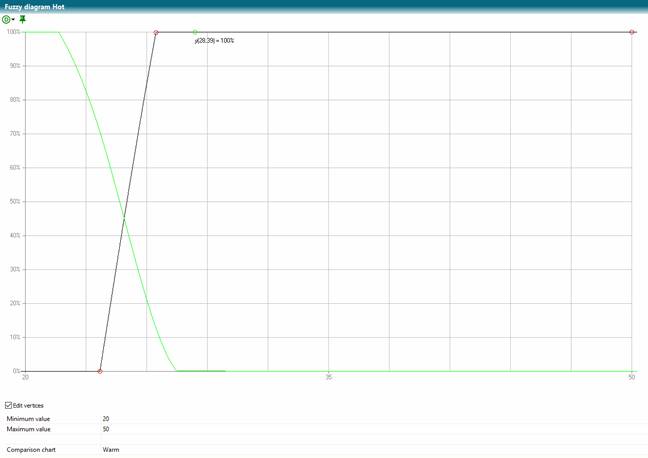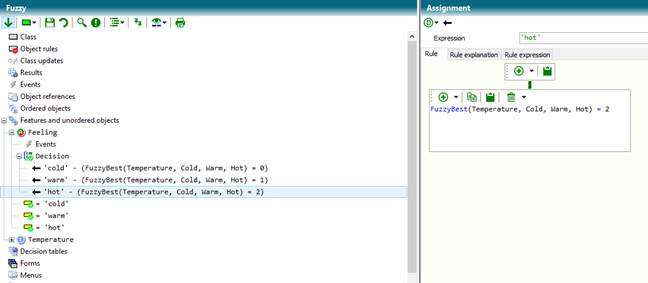Fuzzy functions allow a "soft" control of the rules as opposed to Boolean algebra, which knows only true or untrue.
Often, terms are used in everyday use, for which it is difficult to apply Boolean rules. For example, the term "warm" for the air temperature and for the water temperature is defined differently by the bathtub water. In addition, the areas where the term "warm" applies to air temperatures or bath water temperatures are different. Thus, an air temperature of 19°C may be "warm" for 30% of people, a temperature of 21°C for 70% and a temperature of 25°C for 95% of people. A temperature of 30°C, on the other hand, is no longer "warm" but "hot" for a higher proportion of the population. The transition between the two terms is fluid. The temperature of bathtub water is similar, but the characteristic of the temperatures of "cold", "warm" or "hot" is another.
With the help of Boolean algebra, these characteristics are difficult to grasp. In a Boolean algebra, switching from a term "warm" to "hot" is associated with a fixed value. Temperature >25°C = hot; Temperature <= 25°C = cold.
Fuzzy diagrams define the probability of a value being applied. Thus, a characteristic curve can be stored for the term "warm" in which the probability of the probability of the occurrence of a value is shown.
With the help of the fuzzy functions, these diagrams can then be linked and evaluated together.
Example:
Three fuzzy diagrams are created for the terms "cold", "warm" and "hot" for felt air temperatures:

Diagram for “Cold“

Diagram for “Warm“ with comparison to diagram “Cold”

Diagram for “Hot“ with comparison to diagram “Warm”
The soft term "Feeling" can now be determined by means of a diagram system, depending on a recorded temperature. Characteristic shift (attribute functions MoveX and MoveY of fuzzy variables) could be used to adapt to different groups of people (not shown here).
